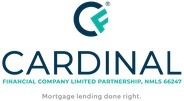- Loan options
- USDA Direct loans, Guaranteed loans, home improvement loans and refinancing
- Minimum credit score
- 580
- State availability
- 49
New American Funding is a direct mortgage lender available in all states except Hawaii. Headquartered in California, it has 170 locations across the country and has serviced over 219,000 loans. It offers a wide range of home loans, including government-backed loans like FHA, VA and USDA loans. For conventional and VA loans, it also offers a cash buyer program.
Many lenders want to see USDA applicants have a minimum credit score of 640, but New American Funding will consider buyers with a score of 580 or more. You can get a loan estimate without hurting your credit score, but this automatic quote might not include USDA options. The preapproval and loan application can also be completed online.
Note that there are several eligibility requirements the buyer and the property have to meet for approval. New American Funding helps streamline that process by working with you to identify your eligibility and to answer any questions you may have. Getting approval for a USDA loan can take 30 to 60 days.
USDA loans do not require a down payment or private mortgage insurance (PMI), so you will save money on those. However, there are still fees, many of which need to be paid upfront. These include lender fees and guarantee fees, along with traditional closing costs.
- Flexible credit score requirements
- Online application
- Nationwide availability with in-person locations
- Lender and guarantee fees
- Approval process can be longer
Many praise New American Funding for its dedicated customer service representatives. Even though someone’s customer service experience can vary based on the representative, there are several reviews from ConsumerAffairs reviewers mentioning many different helpful loan officers. One Florida reviewer said, “Tania not only took the time to make our entire loan process easy to understand — she broke it all down line by line to make perfect sense financially.”
There were a few reviewers who did complain about the underwriting process, saying that this part delayed the closing of their home. Many felt that they promptly provided the underwriter with information, but they often had to provide it again.












